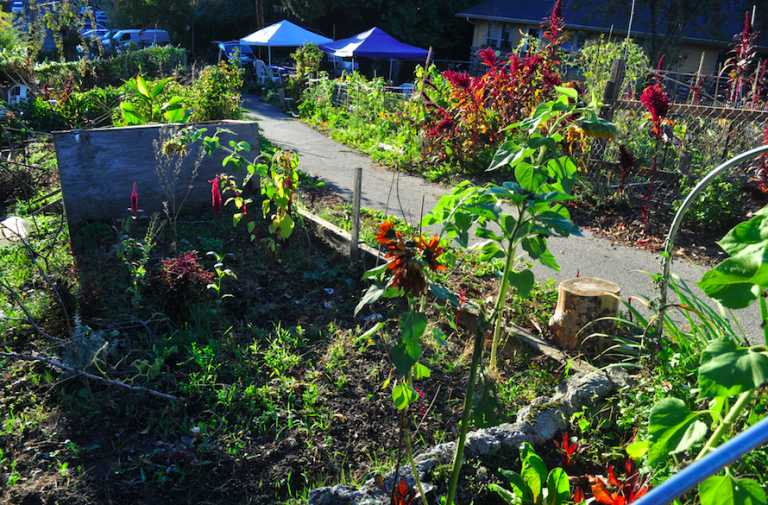Published on October 24, 2019

Have you stumbled on a P-Patch community garden in your neighborhood? These beehives of gardening and community populate every corner of Seattle. Both the gardens and the people are as diverse as the neighborhoods they serve. From sprawling production farms to tiny lots, each provides a green respite, an open and interactive space. To those with less access to yards and green space, such as renters and immigrant communities, community gardens are especially important.
Despite its success, Seattle’s P-Patch program faces uncertainty. Despite continued demand, 2015 saw the last new P-Patch. Predictably, development pressures many gardens. However, a funding proposal tucked into Mayor Jenny Durkan’s 2020 budget would help, but it will need the support of the community and City Council. It targets $3 million from the Sweetened Beverage Tax for deferred maintenance needs and garden relocation assistance.
Regarded originally as temporary uses, P-Patches activate neglected places. Several started as problematic street rights of way. The Interbay P-Patch started as a good use of a capped landfill.
Slowly, consistent city support and patient, dedicated gardeners grew a program. Equity was an early value. Almost 20% of P-Patches are associated with the New Holly, Rainier Vista, High Point and Yesler communities, providing gardening regardless of personal resources. Laotian families arriving in the ’80s found home and community in Greater Duwamish’s Thistle, Snoqualmie and Maa Nyei Lai Ndeic P-Patches. A drive to increase accessibility inspired P-Patchers to revamp paths, plots and common areas for the differently abled. Sharing the bounty, P-Patchers donate fresh organic produce to food banks and hot-meal programs — 17 tons in 2018.
This article was co-authored by Richard Conlin, former Seattle City Council member and current associate faculty member in the Department of Urban Design and Planning at the University of Washington.
Continue reading at The Seattle Times.
Originally written by Richard Conlin, Jim Diers, and Joyce Moty for The Seattle Times.